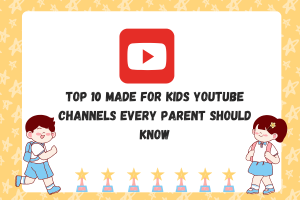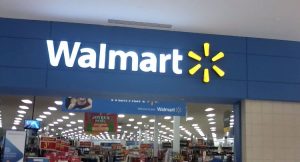Best Food Delivery Apps: 9 Apps to Increase Restaurant Sales

People today are cutting down on human interaction and increasing online interaction. Amidst all the advancement of technology, people have started using and flourishing online businesses. Regarding online business, the first thing that has evolved is food delivery.
With the increase in the eCommerce business, various best food delivery apps have helped restaurants upscale their ROI. From Pizza to main course meals or any other cuisine, there are multiple food apps available in the market today.
Why are apps for food delivery so popular? After all, it’s no secret that the restaurant business is notoriously difficult to profit from. The response? Convenience.
Customers are willing to pay more to have their meals delivered right to their door. It’s time to consider how to capitalize on this demand for ease and create a successful business as a tech entrepreneur.
Top 9 Successful and Best Food Delivery Apps of Today
According to Statista, in 2023, the industry for online food delivery is expected to generate US$0.91 trillion in revenue and it is anticipated to reach US$1.45 trillion by 2027, with a rise at a 12.33% CAGR.
This growth has led to an increased demand for food delivery app development services. Developing a food delivery app can help restaurants and food businesses expand their reach, increase revenue, and streamline their operations.
Some delivery services allow you to use their network of drivers to relieve your restaurant of some of the burden. Restaurant consulting is a professional service provided to restaurant owners and operators by experienced individuals or firms with expertise in various aspects of the restaurant industry. The goal of restaurant consulting is to help businesses improve their operations, enhance efficiency, and ultimately achieve greater success. However, a lot of those firms levy commissions on purchases to cover the cost of paying their drivers. A commission-free option is to use solutions that enable your restaurant to hire and oversee delivery drivers.
As you can see, delivery applications have advantages and disadvantages. You can select the delivery apps that are most suitable for your area, spending limit, and company model by defining what you require from them.
Let’s examine the advantages and disadvantages of the top delivery apps for 2023.
Uber Eats
Uber Eats offers a variety of delivery options. Their app is a motivating choice thanks to their high-value relationships in their active marketplace.
Pros:
- One of the most substantial and trustworthy food delivery networks for drivers.
- Access to the limited consumer base of Uber.
- You can reach your clients in the online market by using marketing techniques.
Cons:
Without integrations for your restaurant’s POS system, taking and processing orders will add to the strain on your personnel, increasing the chance that wrong orders will be placed due to input error or that an order will be missed during a rush.
Small restaurants find it challenging to stand out while competing with their high-value partners through UberEats.
DoorDash
Restaurants, grocers, bars, and other shops collaborate with DoorDash to offer their patrons efficient delivery services.
Pros:
- Provides a wide range of restaurant-specific solutions.
- They have a significant group of trustworthy delivery drivers called Dashers.
- integrations enabling simple order fulfillment with several point-of-sale programs.
Cons:
The DoorDash marketplace puts eateries up against not only other restaurants but also grocery stores and other food businesses.
ChowNow
ChowNow provides a distinctive selection of delivery options to all the restaurant owners. Restaurants that serve the neighborhood well can benefit greatly from their Direct and Marketplace items.
Pros:
- Links eateries to a network of the delivery personnel.
- With branded apps and websites, there is no interruption between your brand and the customer.
- has a large selection of marketing tools to aid in building brand awareness.
- integrates with the POS systems in your restaurant.
Cons:
- Increases the burden on the restaurant owner for promotion of the restaurant.
- There are fewer delivery options and locales.
Grub Hub
The primary goal of GrubHub is to offer restaurants flexible delivery options. With the help of this program, you may turn the kitchen of your company into a “ghost kitchen” or virtual restaurant.
Pros:
- Provides order management that interfaces with specific POS systems for restaurants.
- Additional delivery options might increase the reach and clientele of your restaurant.
- Maximize revenue by converting the kitchen of your business into a virtual restaurant.
Cons:
- The enormous network of eateries created by GrubHub’s acquisitions has increased competition in their industry.
- The marketing and delivery services offered by GrubHub are customized.
Caviar
Delivering “the best local food” from the “coolest spots,” Caviar is a DoorDash partner.
Pros:
- Restaurants may stand out in the crowded DoorDash market thanks to elevated and exclusive branding.
- Excellent for eateries with one or more outlets in sizable cities.
- Access to delivery drivers in DoorDash’s network who are trustworthy and have worked with DoorDash for years.
Cons:
- Does not gain from the substantial user base or sophisticated marketing capabilities of DoorDash.
- Only DoorDash partners can access this app.
Seamless
GrubHub runs the Seamless app and retains a separate app and marketplace with unique branding.
Pros:
- GrubHub’s wide range of adaptable restaurant delivery options.
- GrubHub has increased its presence in specific cities with help of branding and delivery services.
- If your consumer base is familiar with the app, Seamless is a good option.
Cons:
- Less well-known outside of major cities.
- Now that all GrubHub partners can access the Seamless marketplace, differentiating your brand can be more difficult.
Postmates
For user bases in particular geographic areas, Postmates is a well-known program on the market. Although the Postmates app is still independent and enjoys a devoted user base, UberEats today owns and operates the company.
Pros:
- Access to UberEats’ network of delivery drivers as well as all the advantages of that service with a smaller marketplace.
- Offers customers who are Postmates members a unique perk scheme.
- Strong brand recognition as a result of extended delivery times in different cities.
Cons:
- Only in some regions is Postmates well known.
- Postmates app can be accessed through other UberEats networks only.
Eat24
Eat24 is a food delivery app that was acquired by Grubhub in 2015. It offers customers access to a wide range of restaurant options in their local area, making it a popular choice for those looking for convenient food delivery services.
Pros:
- Provides access to a vast network of restaurants across many regions.
- Offers a user-friendly interface with easy ordering and payment options.
- Provides real-time order tracking and updates to users.
- Provides a rewards program that enables users to accumulate points and exchange them for reductions on future purchases.
Cons:
- Limited delivery options in some areas.
- Competition from other food delivery apps like DoorDash and Uber Eats.
- Issues with order accuracy and delivery times have been noted by certain consumers.
- Limited possibilities for client support in the event of problems or concerns.
Deliveroo
Deliveroo is a UK-based food delivery platform that operates in several countries worldwide, including Europe, Asia, and the Middle East. It partners with a wide range of restaurants to offer customers an extensive menu selection for food delivery.
Pros:
- Provides access to a broad network of restaurants and cuisines in various regions.
- Offers flexible delivery options, including restaurant pickup and scheduled deliveries.
- Customers can experience real-time tracking as proof of delivery for their orders.
- Offers a subscription service that provides discounts and other benefits to regular users.
- Has an easy-to-use app and website interface that allows for quick and easy ordering and payment.
Cons:
- Delivery fees can be higher than other food delivery apps.
- Limited delivery options in some areas.
- Some customers have reported issues with order accuracy and quality.
- Limited customer support options when it comes to issues for orders or delivery services.
Conclusion
Food delivery apps have become a necessity for restaurants and food businesses in today’s digital age. They offer numerous advantages, such as increased sales, expanded customer reach, and streamlined operations. By choosing the right food delivery app, businesses can benefit from these advantages and take their sales to the next level.
Additionally, investing in food delivery app development can provide businesses with more control over the delivery process, reduced costs, and a better customer experience.
Author Bio:
Albert is a well-rounded content marketer. His experience in digital marketing techniques led him to help entrepreneurs to achieve maximum ROI results for their businesses through effective content strategies.






